It’s called elote in Mexico. Mazorca in Colombia. In Ecuador and Peru it goes by the name choclo. Get your corn on the cob on the street, with cheese and mayonnaise on top.
Or maybe with butter, and sprinkled with lemon juice.

Or better yet, sautéed with onions and chopped chiles, topped with lime juice and chili powder and served in a cup.
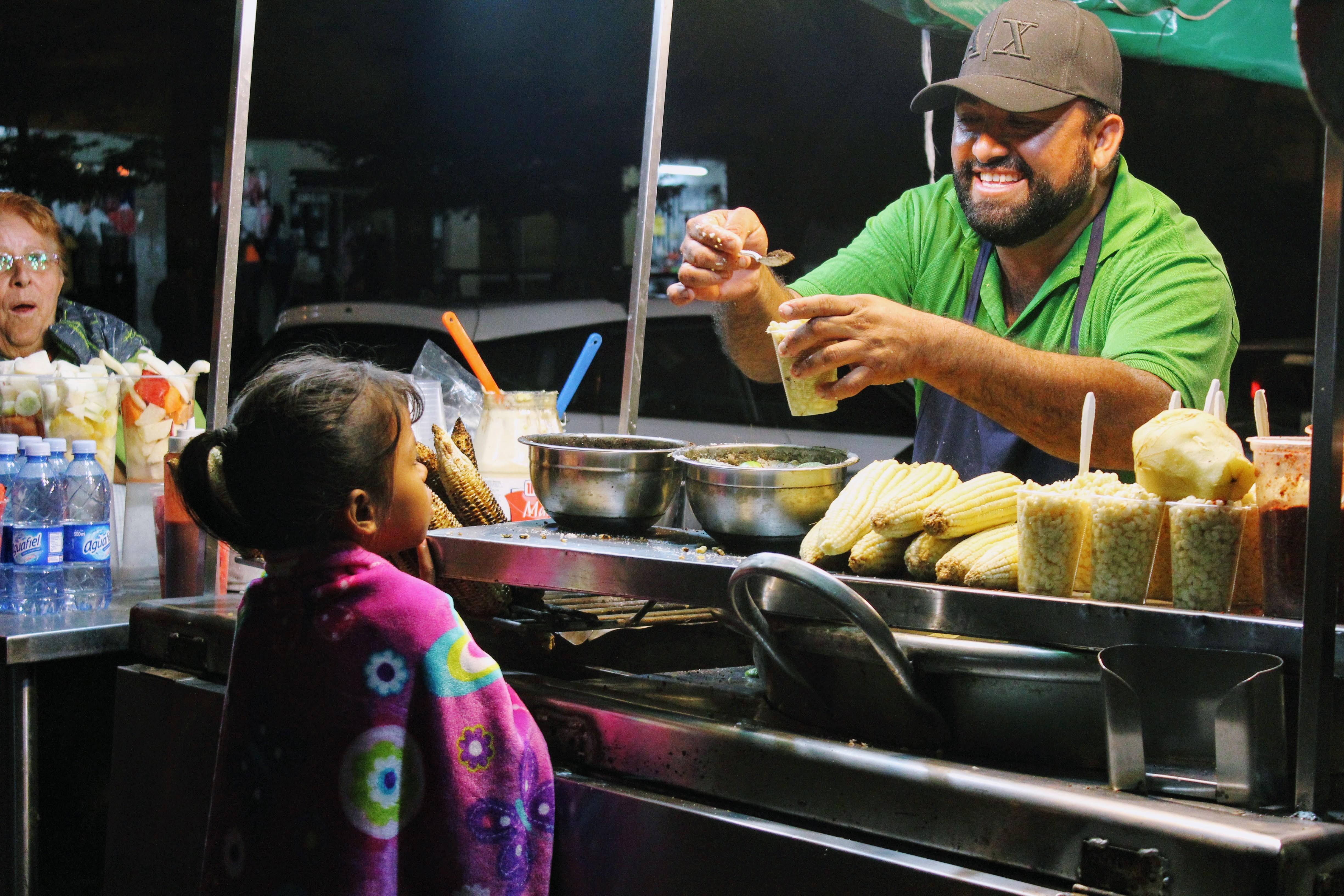
In a soup, as dried or popping kernels…
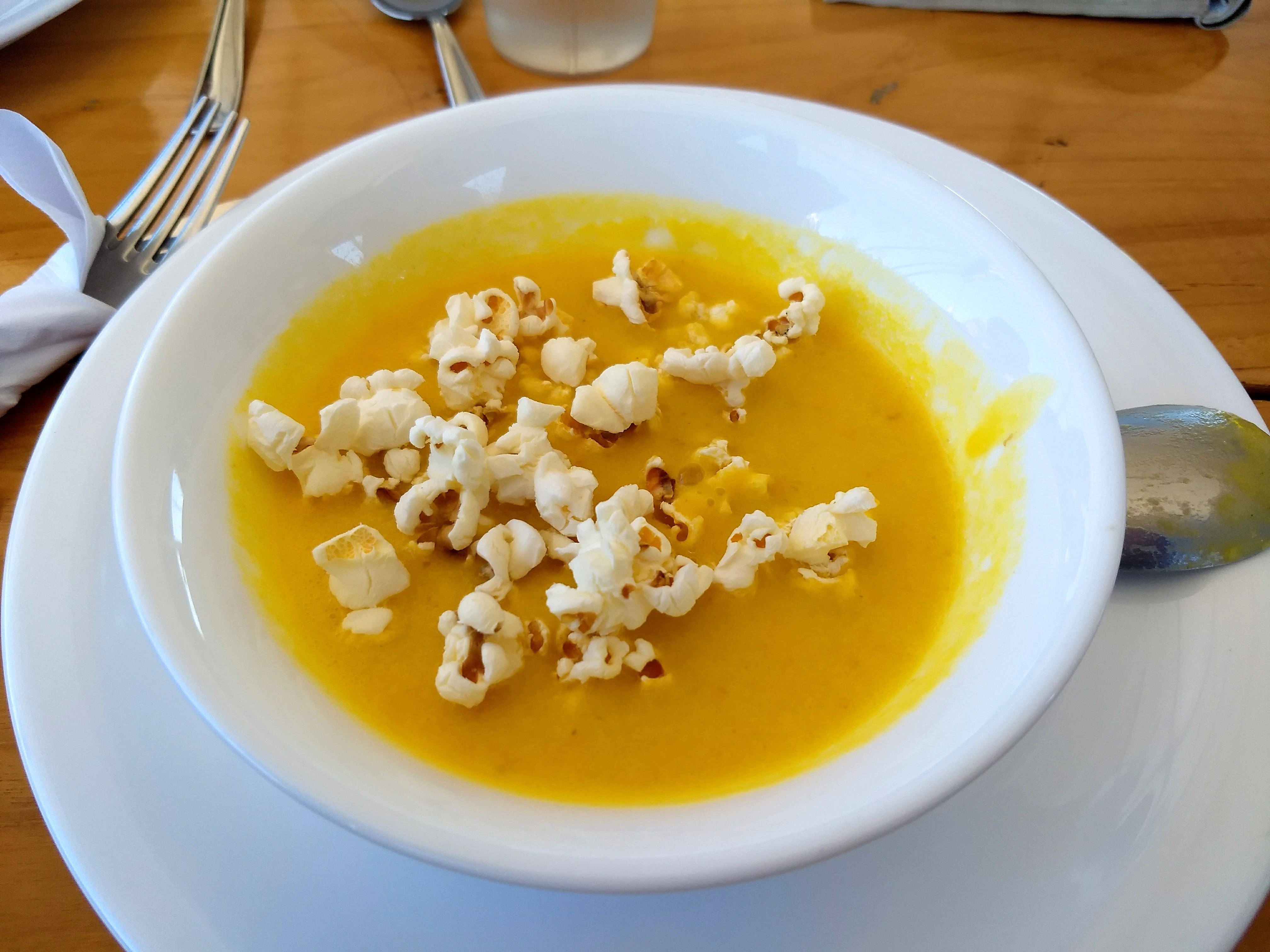
… or entire chunks of cob.
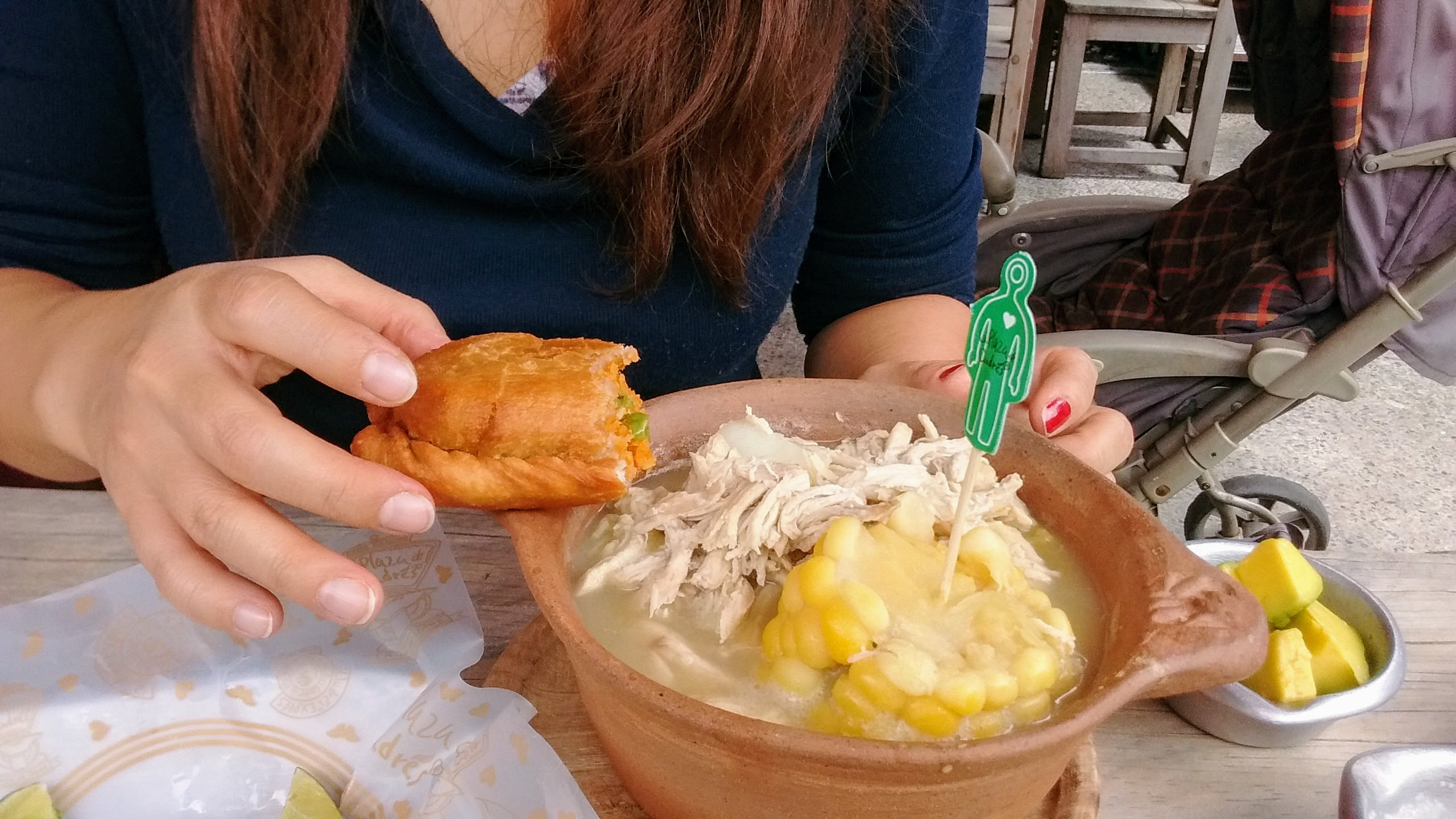
As roasted nuts.

Cooked, fried and served with grilled meat.
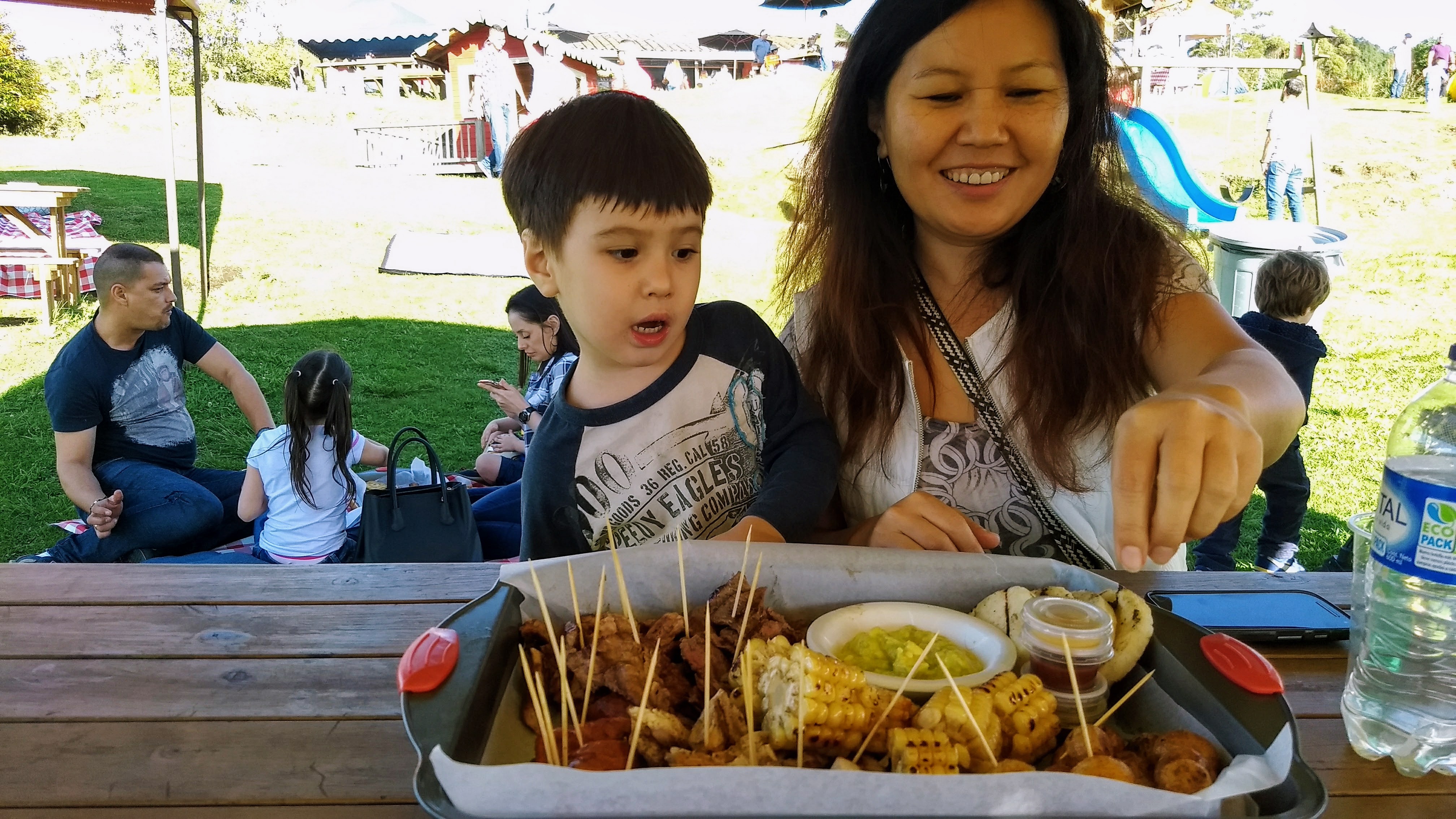
Mashed into dough, and steamed in plantain leaves.
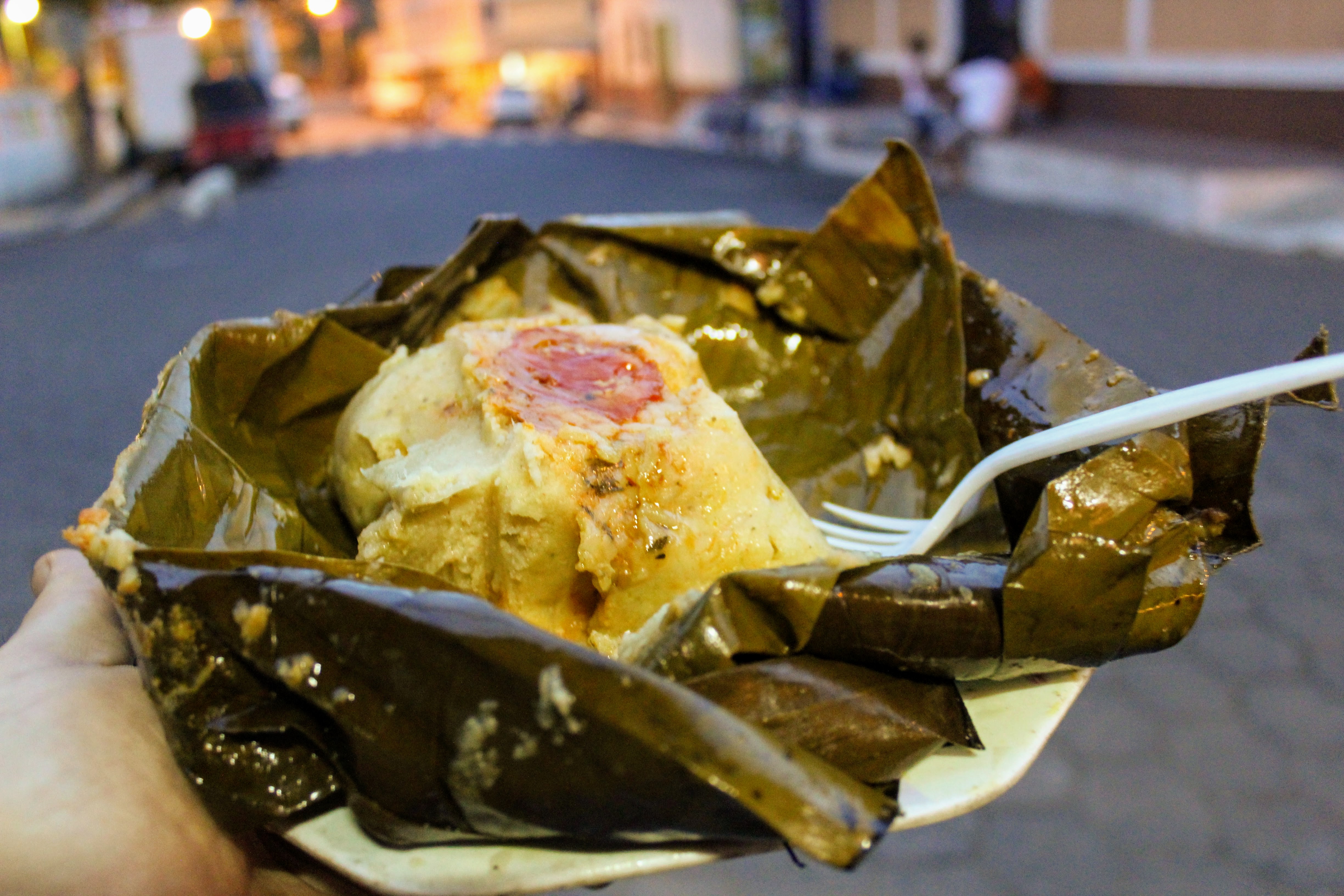
As the base for arepas, those flat, round corn “pockets” popular in Colombia.

Yellow, white and purple.
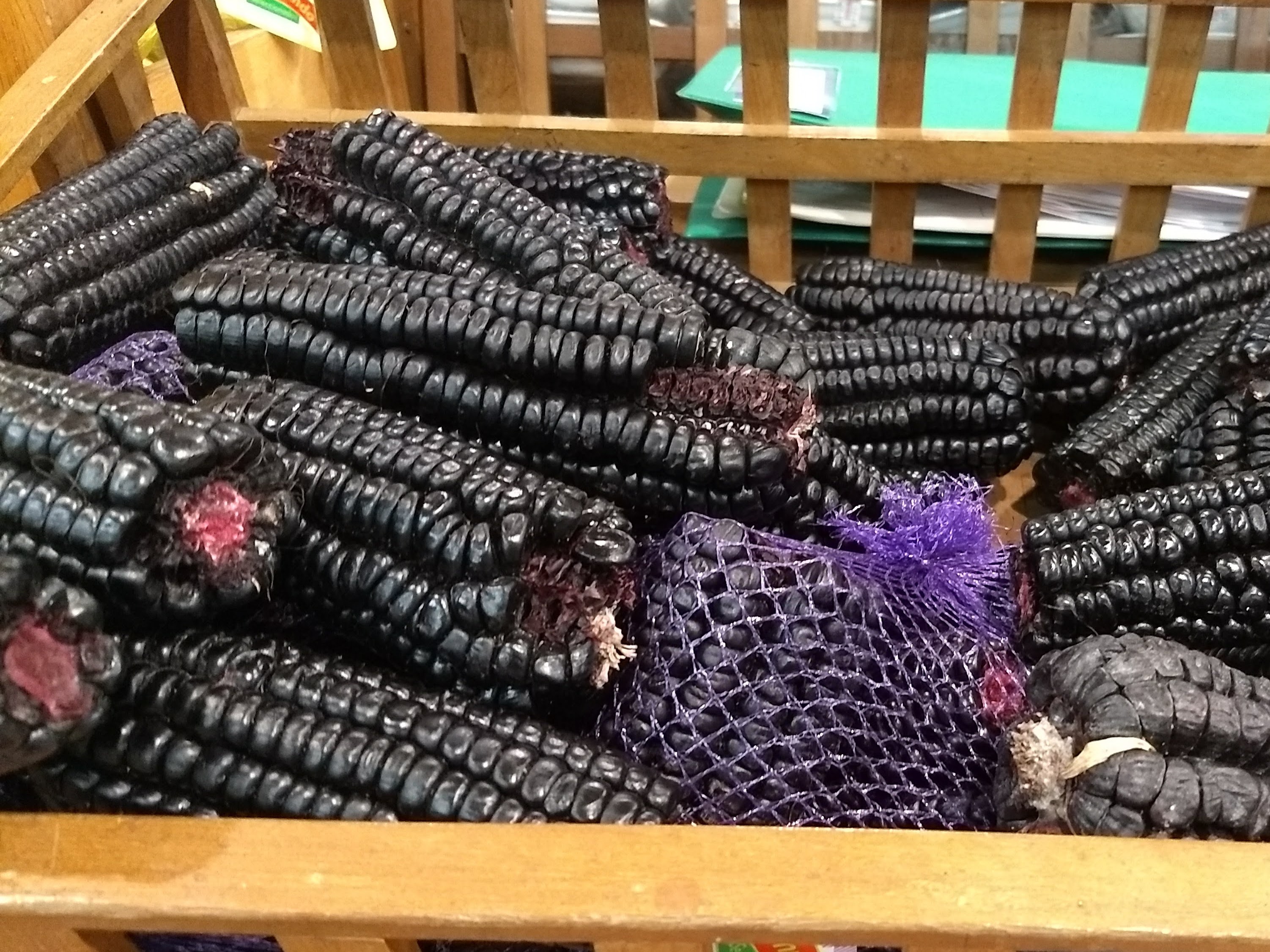
Turned into a drink.
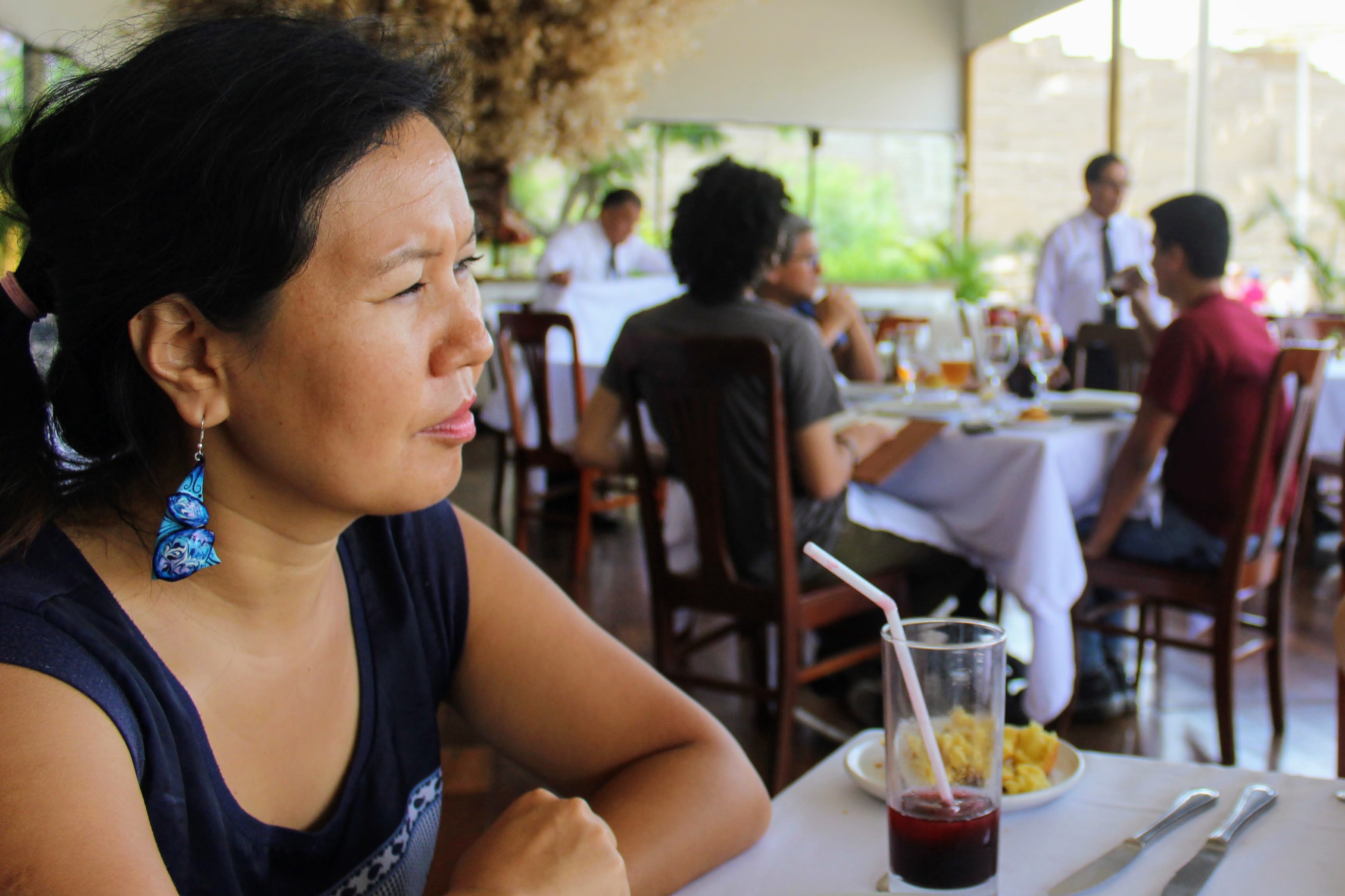
Or a dessert.
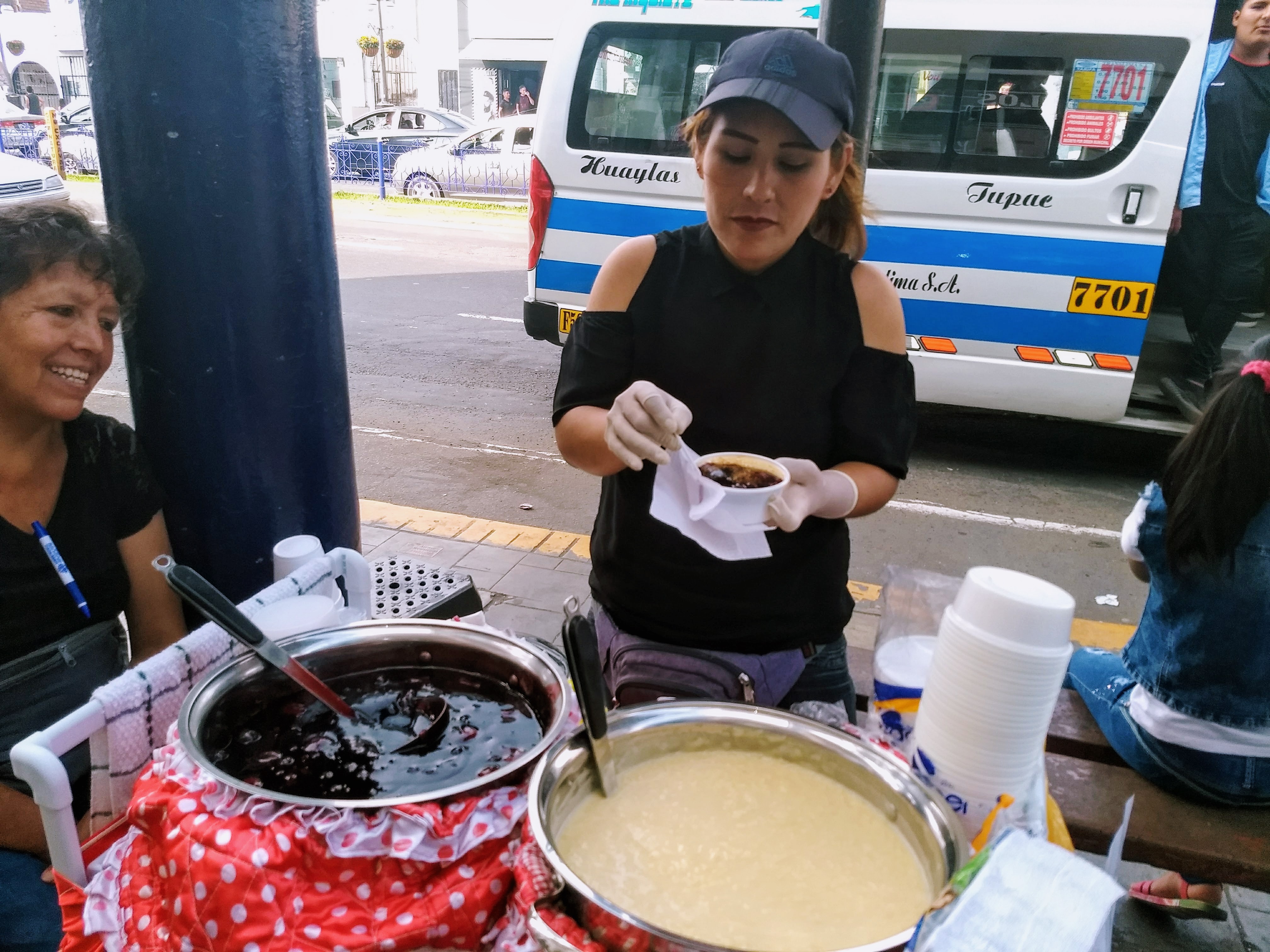
If there is one thing that unites the residents of Mexico City, Bogotá and Quito, it’s the ubiquitous presence of corn on their streets and in their lives.
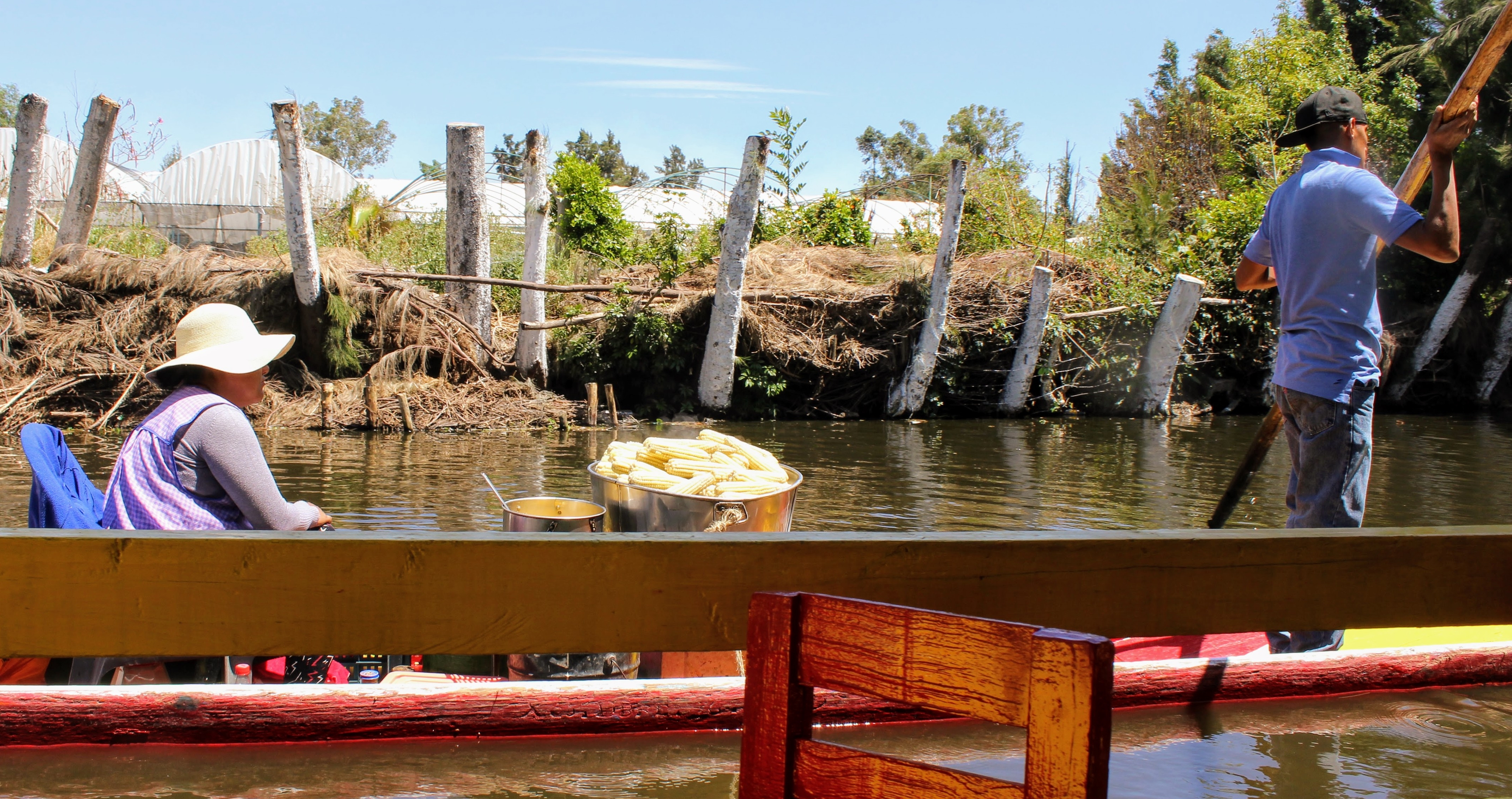
Growing up in USSR and then Israel, corn was never part of my world. Potatoes being the main staple food in our Russian Jewish home, I don’t remember my parents ever buying or cooking corn. I must have tried it at least a few times, but if I did, it didn’t leave any impression on me.
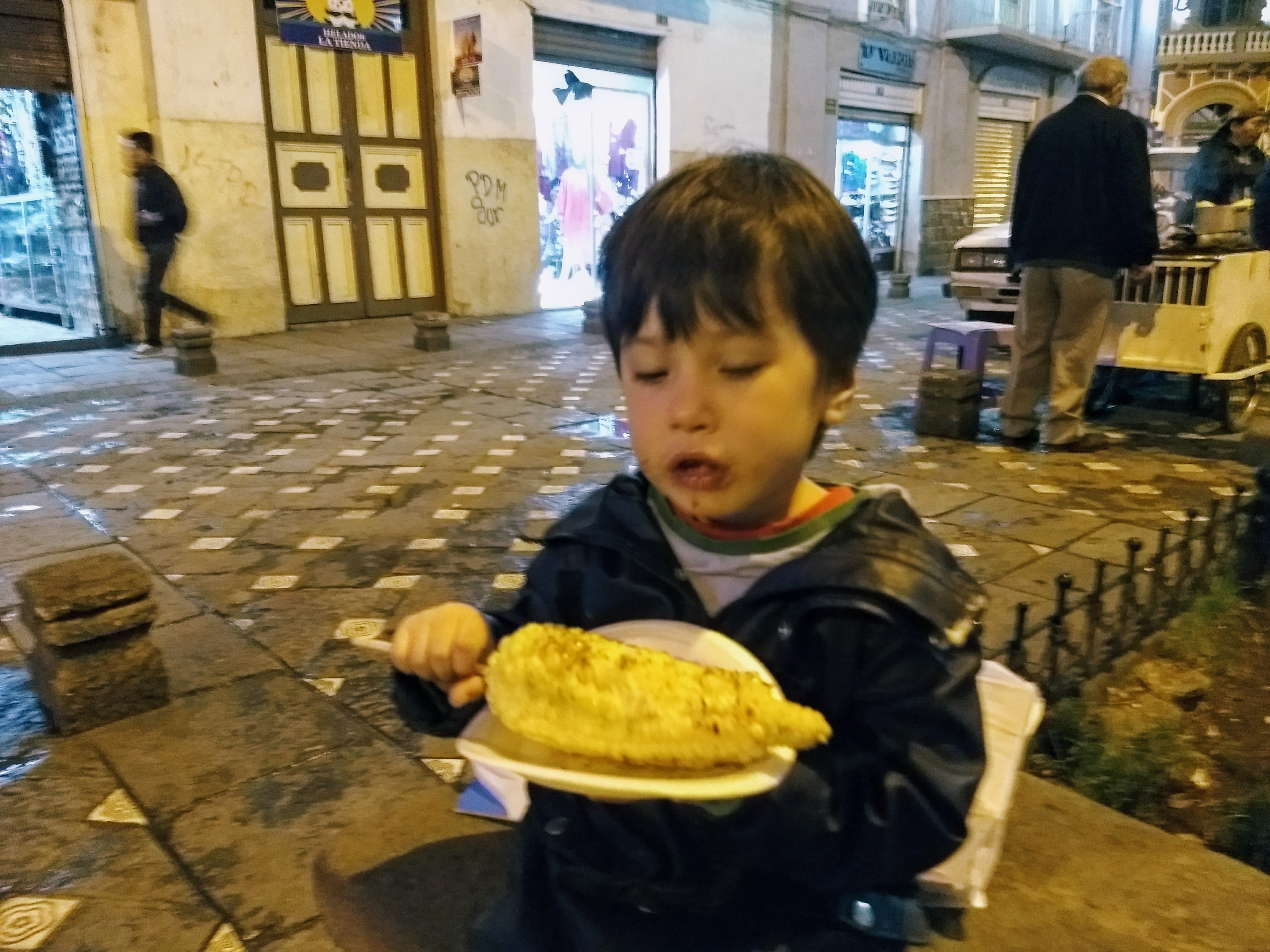
But this has changed during the year that passed since we set foot in Latin America. Starting from Guadalajara in Mexico, slowly making our way down to Peru, the road took us through cities and villages, highlands and valleys. And almost everywhere we went, corn is still vital to human settlement, just as it was for thousands of years before the arrival of the Europeans. Little by little my indifference turned to curiosity turned to awe.
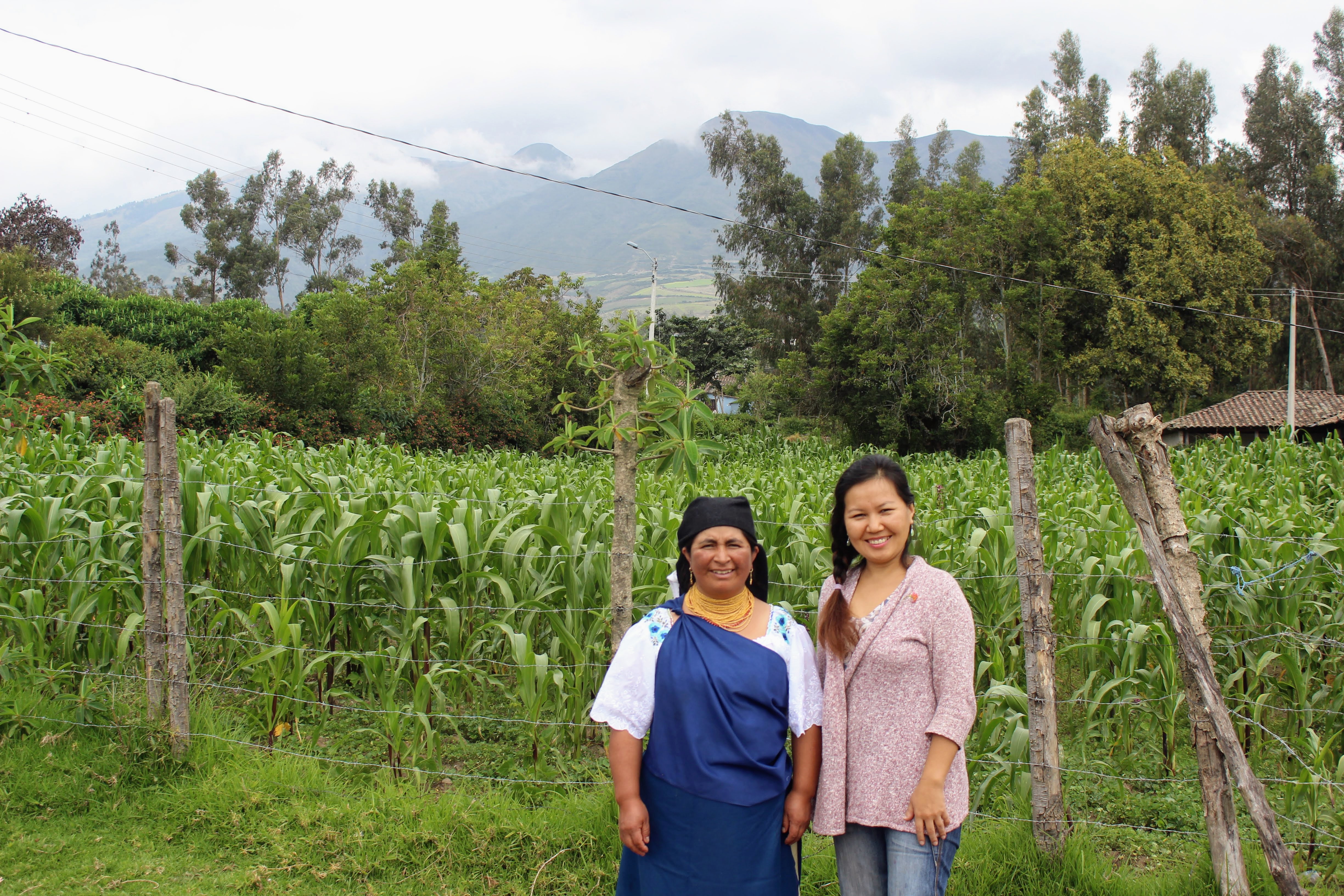
Of all the grains consumed by humans, maize is probably surrounded by more legends and folklore than any other. Popol Vuh, the Mayan creation story teaches that the first grandparents of people were made from white and yellow corn. For Maya people living between Yucatán and Guatemala, Maize has been sacred because it offers a connection with the ancestors, feeding the spirit as well as the body.

According to an Aztec legend, before the arrival of the god Quetzalcoatl, the Aztecs only consumed roots and game animals. They did not eat corn because it was beyond their reach, hidden behind mountains. So Aztec people sent their priests to ask Quetzalcoatl to help them get the corn. He agreed.
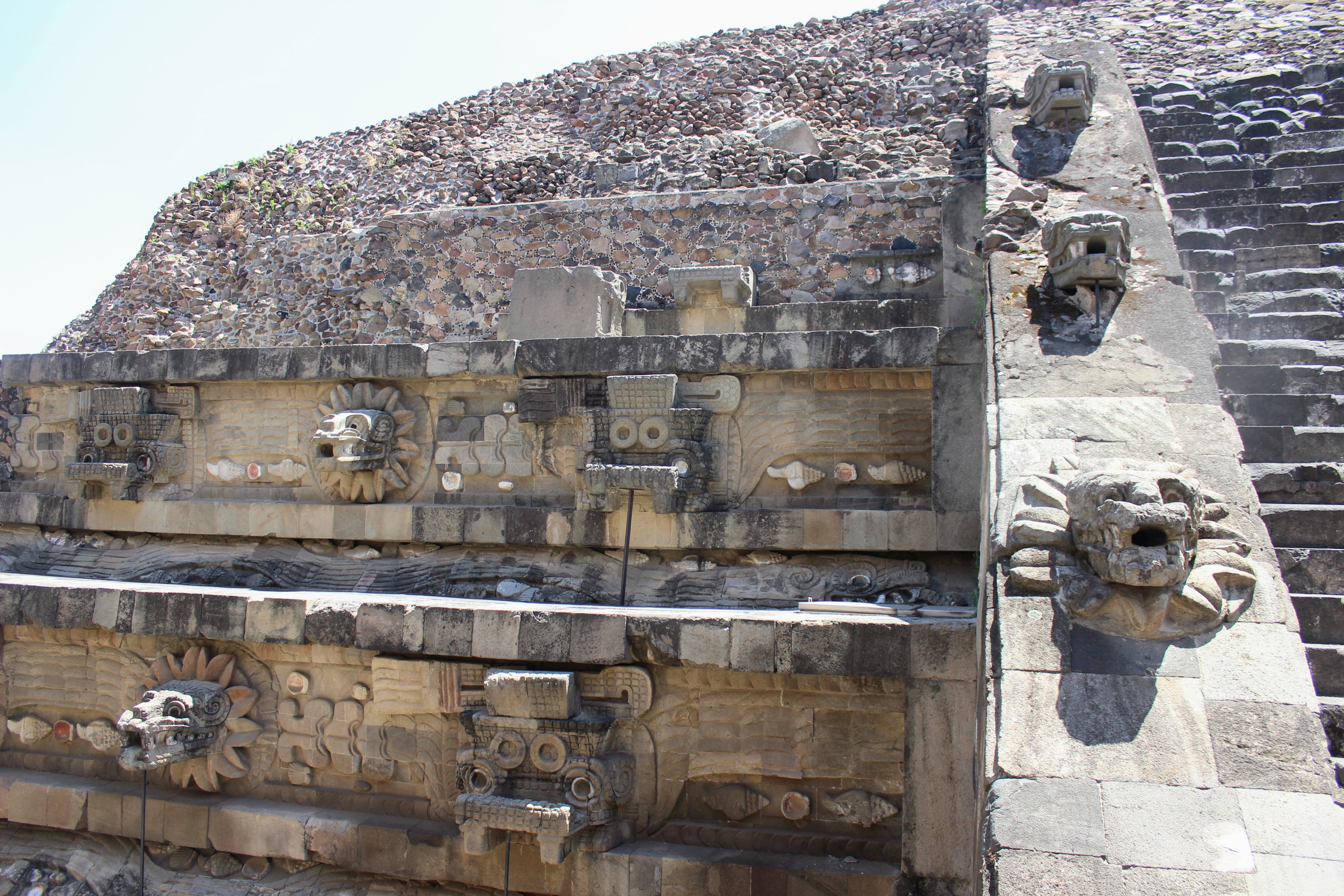
All of the other gods had already tried and failed to move the mountains by using force, Quetzalcoatl instead transformed himself into an ant, made his way toward the mountains, found the corn, took a grain between his teeth, returned to his people, and handed over the grain of corn to be planted.
But that grain of corn won’t shoot sprouts without rain. For this you need an assistance of another god. For Aztecs, that was the role of Tlaloc, the god of rain, the one with circular eyes, to the right from Quetzalcoatl.
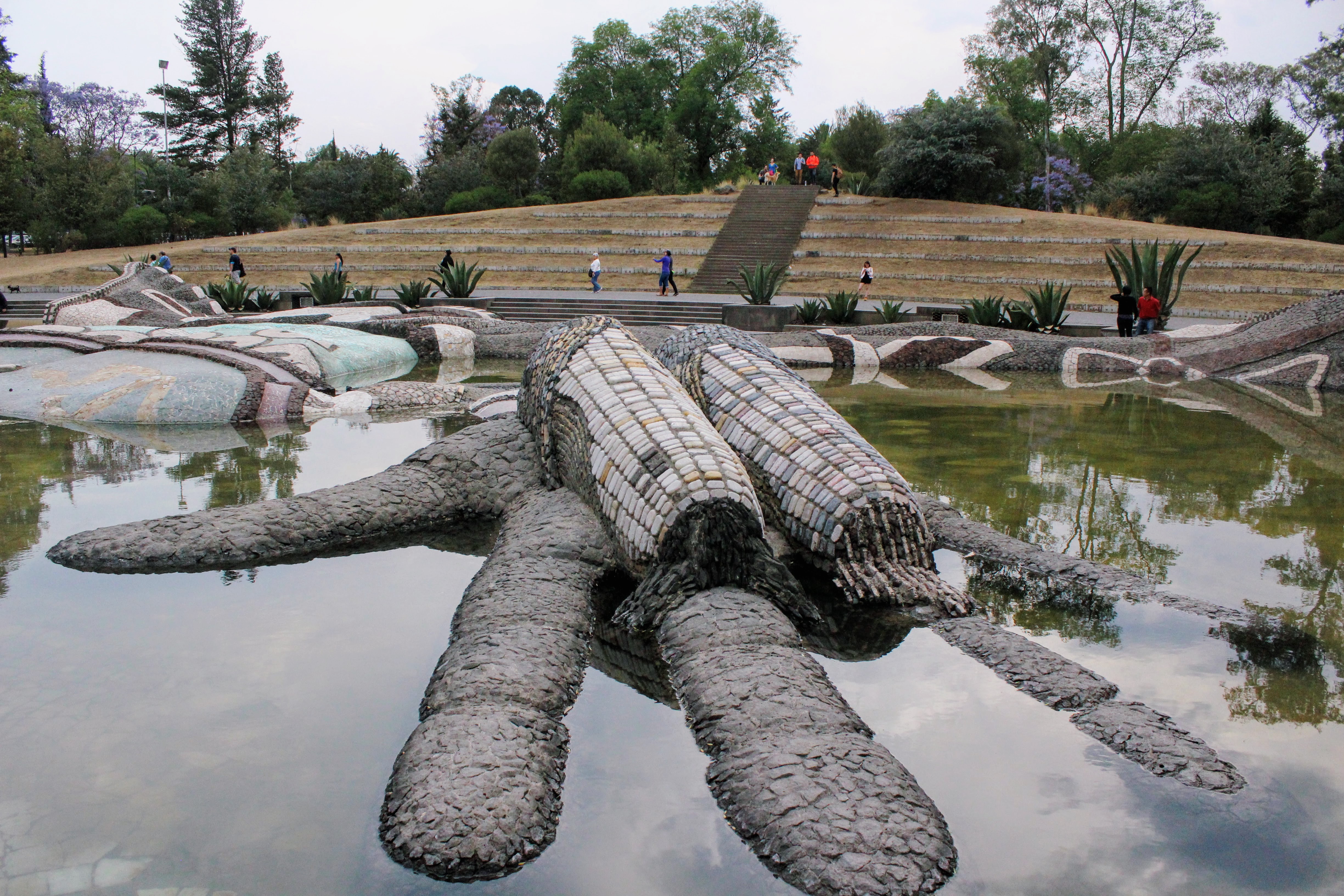
But it’s not just the mythology and history of corn cultivation and consumption that is fascinating. Gradually, I have come to see how awesome maize itself really is.
Just look at it. It’s unlike anything else I’ve ever seen. Rows upon rows of kernels sitting tightly on top of each other. Like a city wall made of bricks. Like a horde of tribesmen holding defense. Like a golden shirt of scale armor. Each kernel too small to count, but together can sustain a family, a civilization.
Take a bite. Sink your teeth into it. You made a dent, but you still have a long way to go, so choose your next dig. Do you move from top to bottom or rotate it around its axis? Don’t hurry, give it a time, respect its symmetry. Is there anything else that feels, that tastes like that? It’s completely alien.
And what’s left after the corn is eaten? A burial ground. Each kernel, however small was its contribution, leaves a mark. Its path in this world acknowledged, remembered. A cemetery of fallen soldiers.

Corn husks also have a role to play in the communal effort. In Mexico they are used to wrap tamales. One artist from Queretaro makes a living by painting over dried corn leaves.
Is it any wonder that corn and its place in culture fascinates Latin-American artists?
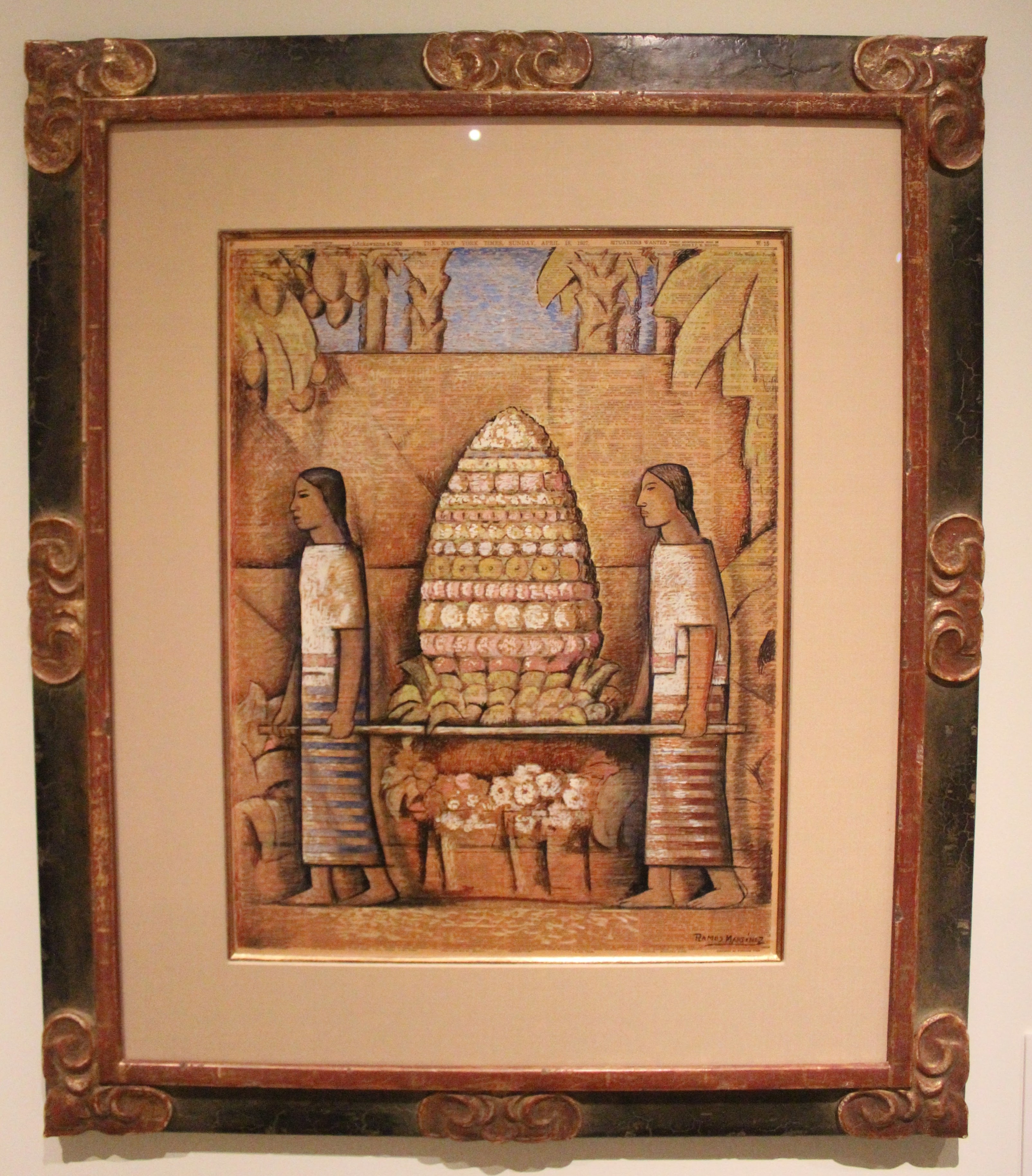
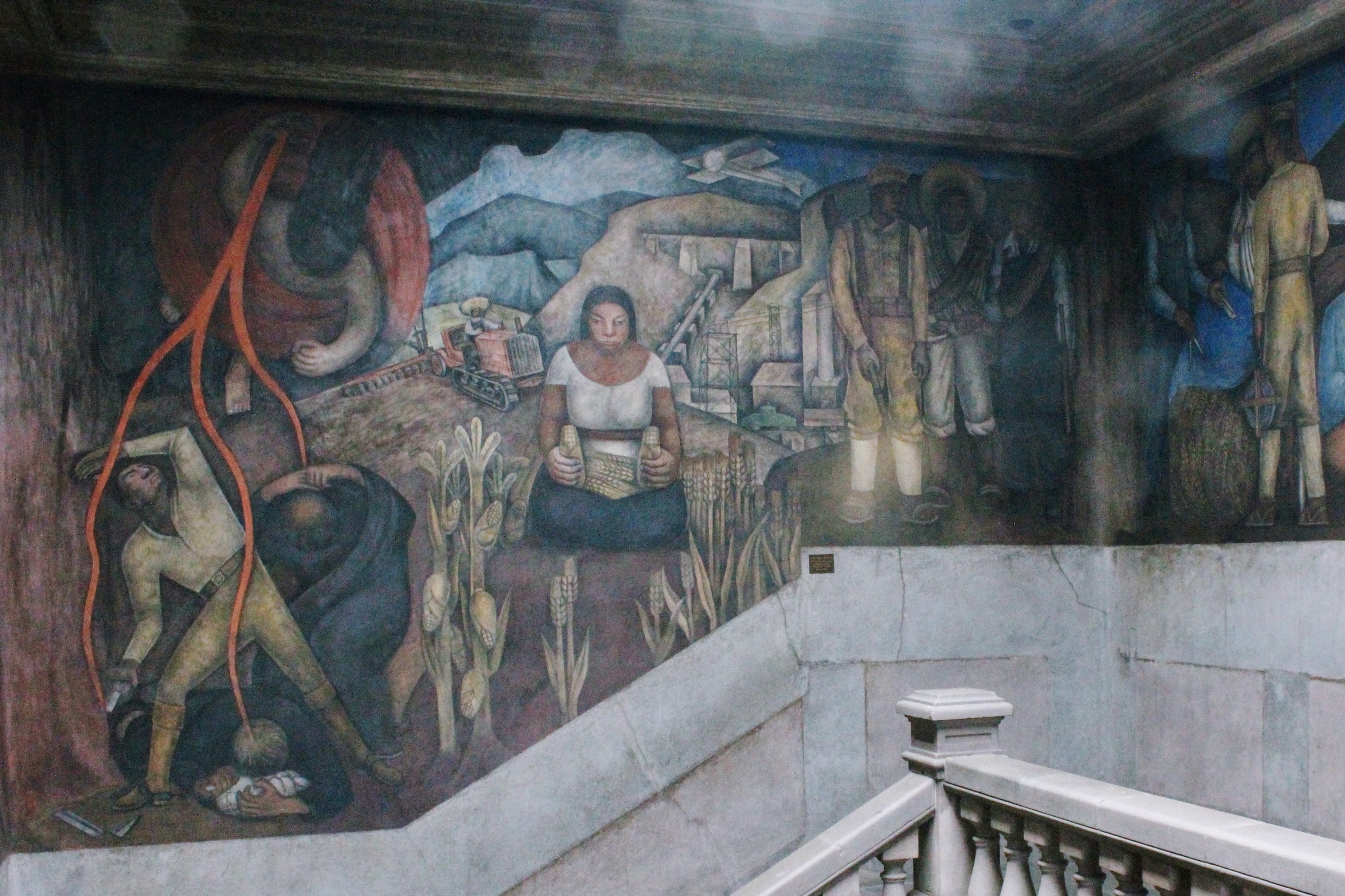
I have often asked myself why the culture here feels so grounded and potent. By now, at least one piece of the puzzle is in place.
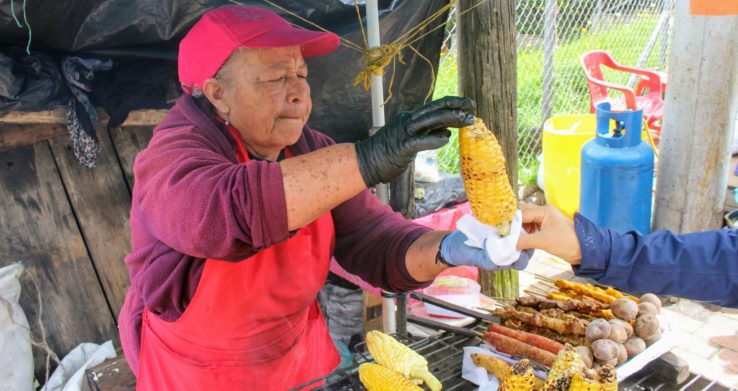

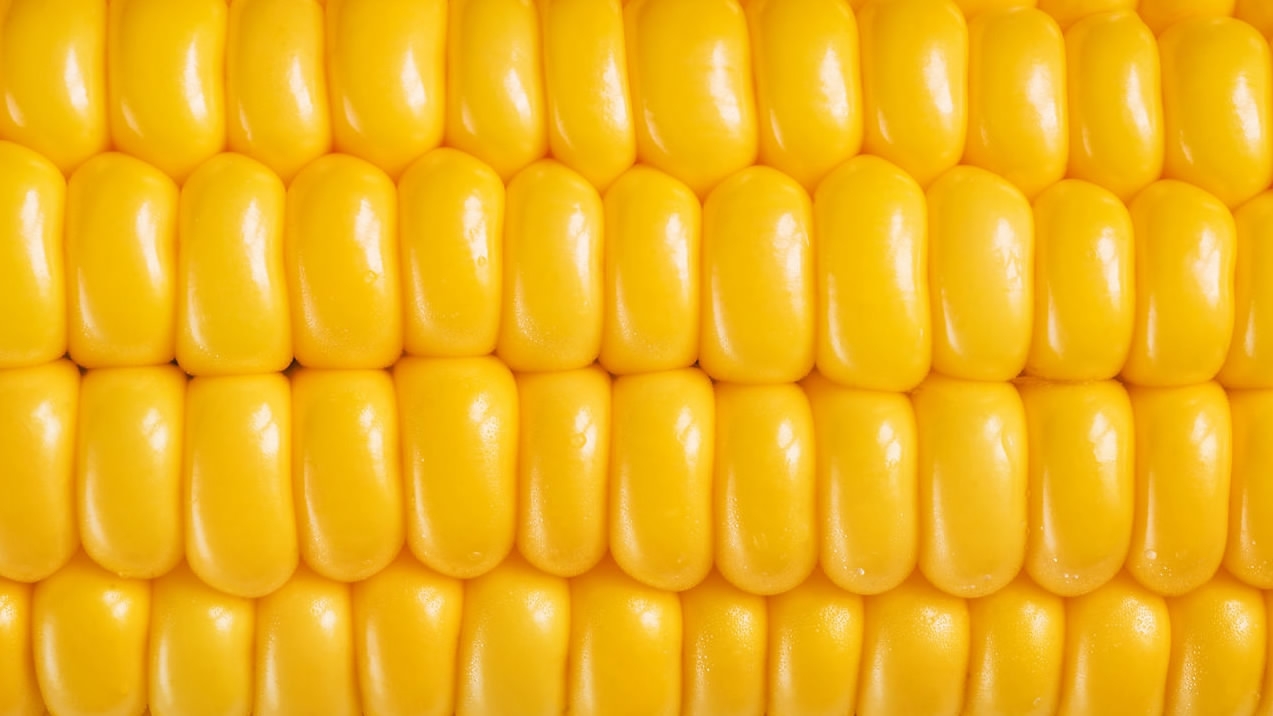
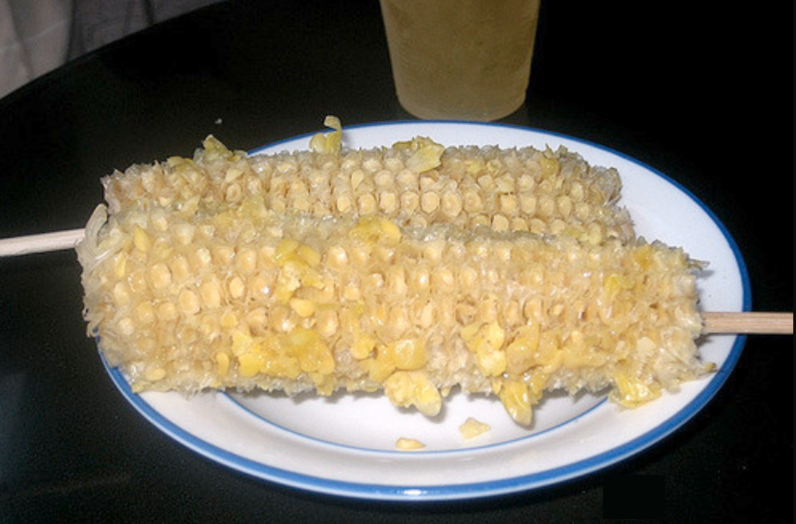



Fantastic article!! Loved reading all about corn…one of my favorite things. My sister eats corn on the cob, one row at a time. The cob is completely clean and dry when she finishes. Takes her forever. I crunch it like the hog I am!! Thanks for this enjoyable read. Am going to the Yucatan soon.
Thanks Patricia for the comment, I guess there are many ways to eat corn ))
We are now in Peru, and here the most popular sort is maiz gigante the cusco. The kernels of this corn are so big, you could eat them separately, one by one.
When I was about 5, one fateful evening on the shores of the Azov Sea we feasted on boiled corn, which turned out to be spoiled. Long story short, it was one of the longest and least pleasant nights of my life. Even after 35 years I still can’t stand the smell of boiled corn or even look at it. Canned corn pieces in a salad I can tolerate if I have to (though in the army I gladly swapped corn cans for тушенка). Does this mean South America is not for me?
Sorry to hear about your ordeal. If the smell of corn turns you off, Mexico could be tricky for you. In a typical Mexican city, the smell of corn tortillas is everywhere. But of course you don’t have to eat “street food”. And as you can see, there are so many ways to prepare and consume corn – maybe some of them will be different enough from the taste that you can’t stand. And who knows, maybe Latin America will redeem the corn for you ))
You made me hungry with these descriptions.
The way someone eats corn is also an interesting psychological test that must say something.
Since childhood I’ve made a point of eating it row by row, biting off each grain to its root and leaving orderly rows of dents.
I think this corn-eating habit attests to a certain temperamental systematism and consistency … which is exactly what makes you fit for software development. Forget SAT, should just give corn tests to perspectives… ))
Terrific Mike ! And the accompanying photos are superb !!
Thanks Gordon, glad you enjoyed it!
Great observations, Misha ..as usual 🙂 !
Thank you, Natasha!
Mike,
Fascinating even to me who grew up eating canned corn in the winter and fresh corn on the cob in the summer – as well as having it in Peru, Chile and almost all of central America. So to add to your list of places where it is popular, just came back from Vietnam, Cambodia and Thailand (Bangkok only) and happy to report that corn on the cob is a major street food in all 3 countries – served as whole cob or partial one with salt and pepper and also in soups. Popcorn is also popular in Vietnam – so it is global in reach!
Hi Sid,
Interesting, I’ve been in Vietnam but I don’t remember seen corn being sold in the streets. Probably that’s because I pretty much ignored all street food, preoccupied with not getting food poisoning )) Do you remember how it’s called in Vietnam or Thailand?
Hi Mikr,
My language skills are minimal compared to you / so could never do the names for corn justice in any language.
What is wrong with street food – little stomach churning is good for the soul . Seriously kept away from it most of the time and always in Cambodia and rarely even got sick – except once in Vietnam-